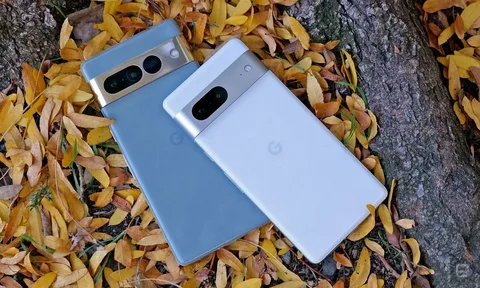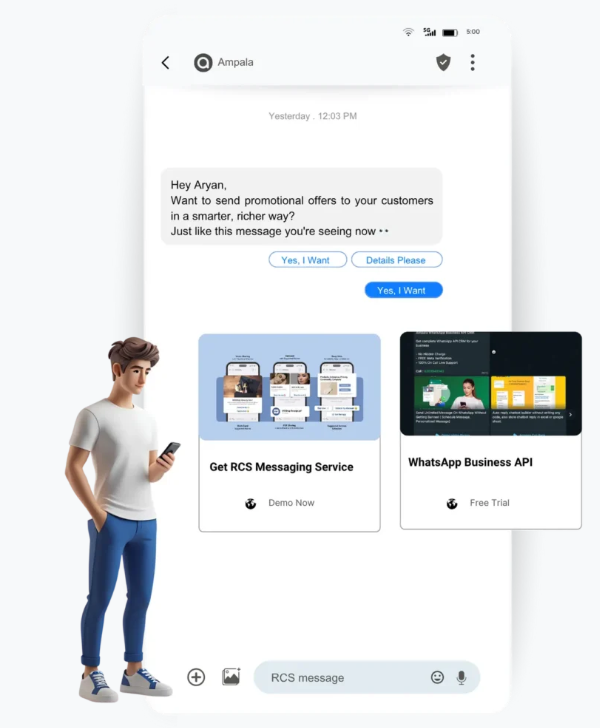Furthering your business requires an understanding of outbound marketing. Outbound marketing, traditional or digital, is a unique way businesses can gain leverage when competing with others. Outbound approaches, when done right, can drive impressive returns. In this guide, we focus on successful 2025 business examples and explore practical applications, with a focus on tactic implementation.
Understanding Modern Outbound Marketing Fundamentals
Outbound marketing, or proactive marketing, is reaching out to customers directly using various means, making phone calls, and sending out emails. Outbound approaches are a push strategy, while passive approaches are pull strategies and wait for customers to discover, look for, or engage with your brand. Modern businesses such as Salesforce and HubSpot exemplify the best approaches to conversion using technology, showing the power of traditional strategies combined with technology.
Most approaches use the AIDA Framework: Attention, Interest, Desire, and Action. We focus on outbound marketing objectives, and for all your outbound strategies, the model highlights attention first, then generates interest, creates desire, and lastly, drives action. With proper strategies, principles, and the right touchpoints, this psychological sequence can help ensure your campaign is successful for all outbound channels.
Real-World Examples of Outbound Marketing Strategies That Drive Results
Targeted Cold Email Campaigns
The days of the one-size-fits-all cold email are long gone; cold email strategies now use high-level personalization. Leading firms explore techniques where messages are crafted to address specific aches of the recipients. For example, a B2B software company would segment their email groups based on industry, company size, and job role to create tailored messaging for every segment.
Successful cold email campaigns use social proof, relevant case studies, as well as a value offer. The core principle for success in cold email campaigns is giving value to the recipients right away instead of asking for value first. Companies that achieve high open rates on cold emails use subject lines that focus on challenges or trends that impact their recipients.
Cold Calling Enhanced With Modern Technology
Cold calling is still one of the most powerful outbound marketing strategies. It is effective in selling almost any product in any industry, and it has proven time and time again that it works based on numerous examples. Unlike the past, the current approach is completely different. Sales teams conduct social media research, look for mutual connections, and study the company well before they make a call.
Often, professional services firms are able to achieve success by reaching out to prospects who interacted with their content or visited their website. This warm-cold method improves connection rates and enhances the quality of conversations. Finding the right contacts and setting up conversations is made easier with tools like LinkedIn Sales Navigator as they offer relevant account-based engagements.
Digital Age Direct Mail Revivals
Physical mail has seen a remarkable resurgence, particularly for B2B companies targeting high-value prospects. People are receiving less mail, so the novelty of receiving mail creates pleasant and memorable experiences. Technology companies send out branded parcels, personalized reports, or industry research to high-value decision makers.
So, one of the effective approaches is embarking on sending out branded notebooks or industry guides as geometric mailers. These packages often have a greater response to engage than digital alternatives because they provide a sense of touch, and prospects are more likely to remember them.
Examples of the Best Outbound Marketing for Small Businesses
Advertisements in Local Radio and Podcasts
The highlights for small businesses are the use of local radio and podcast advertising, as they are discovering great value here. Local radio advertising is much more affordable than national campaigns aimed at specific regions – for instance, restaurants, retail stores, and service businesses. These businesses also experience a boost in traffic with well-timed radio advertising.
Podcast ads provide even greater segmentation opportunities. Small businesses can sponsor industry-related or audience-related podcasts. This often leads to greater engagement compared to traditional advertising methods. Because of the personalized nature of podcast listening, the connection between a brand and a potential customer is stronger.
Trade Show and Event Marketing
In-person events still offer an excellent opportunity for small businesses to show their products and services to potential customers. Trade shows enable businesses to showcase their products, clarify doubts on the spot, and foster relationships that cannot be formed through digital means.
Successful trade show strategies include scheduling meetings and performing outreach campaigns before the show, booths designed with interactivity in mind, and complete follow-up sequences. Businesses that focus on trade shows as opportunities to build relationships tend to perform better in the long run as compared to those that focus on lead generation.
Networking and Referral Programs
Systematic networking strategies exemplify best outbound marketing for small businesses because they tap into existing relationships and trust. Every successful business owner reserves time each week for networking, either offline or online.
Referral programs reward current customers for bringing in new prospects, creating a blend of outbound and inbound strategies. Service-oriented businesses tend to have the highest conversion rate through leads that are generated via referrals because the prospects come with trust already established.
Outbound Marketing Methods Used in 2025
Technology-Powered Personalization at Scale
The way businesses execute outbound campaigns has significantly changed with the use of advanced personalization technology. Platforms now monitor potential customers and their businesses and study entire industries to craft automated messages at a personalized level. This new technology allows smaller teams to execute campaigns which previously required entire marketing departments.
These advanced technologies assist in offering the best calling windows, predicting message effectiveness, and even suggesting topical discussions based on recent company news and social media activity. Companies leveraging technology for outbound marketing have higher outbound sales calls response rates compared to those who use generic messages.
Video Prospecting and Personalized Content
Business professionals have adopted the use of video messages, which are more personable than text-based communication, for outbound prospecting. They now record short personalized video messages to different prospects, addressing them by name and talking about their companies or recent milestones.
Sending and tracking video messages has been made simpler by platforms such as Vidyard and Loom. Successful video prospecting focuses on offering relevant insights, not a sales pitch. This way of prospecting tends to have higher response rates and creates better conversations.
Outreach Tactics for Social Media
Nowadays, salespeople have taken to LinkedIn as their go-to platform for B2B outbound marketing. They have begun using connection requests, direct messages, and engagement with published content to start to nurture some relationships. In any case, effective LinkedIn outreach is much more than sending a sales pitch. It takes careful planning, strategy, and a bit of patience.
The best approach involves commenting and sharing on prospects’ content before direct contact. Initially, this may seem counterintuitive, but this strategy helps build credibility and familiarity. Subsequently, prospects are more likely to respond positively when contacted.
Comparisons of Outbound and Inbound Marketing Techniques
Integrating Complementary Strategies
There is greater overall marketing effectiveness when understanding how outbound and inbound strategies support and complement each other. Inbound marketing relies on valuable content and search engine optimization (SEO) for attracting prospects, while outbound strategies target specific individuals who may never come across the marketer’s content.
A software company may have a content marketing strategy aimed at drawing visitors to their site. They can then use outbound strategies to target high-level decision-makers at companies that have not yet come across their content with cold email campaigns. The combination enhances market coverage and accelerates revenue.
Differences in Measurement and Attribution
Different types of marketing, inbound versus outbound, differ in the way they are measured. Outbound campaigns tend to offer and fulfill more immediate results and trackable responses like receiving emails, phone calls, and booked meetings. Inbound marketing, on the other hand, requires more sophisticated counter systems and often requires a longer timeframe for attribution.
Businesses that achieve the best results integrate both inbound and outbound marketing into one dashboard. This helps inbound and outbound teams understand which marketing efforts yield the most qualified leads and revenue and helps determine the most effective channel. This approach helps in the structured improvement of all marketing systems.
Outbound Marketing in Action
Psychological Principles in Outbound Marketing
Effective outbound marketing relies on basic psychological components which all humans share. Outbound marketing utilizes the principle of reciprocity, whereby giving some value like business insights, useful tools, or valuable connections makes prospective buyers respond more.
Also, outbound effectiveness relies heavily on social proof. Messages that mention other people like mutual friends or colleagues, other companies in the same field that have successfully used the same strategies, or some professional recognition help create the much-needed trust to respond. Evidence is very crucial for outbound marketing, and hence prospects are more likely to respond if they see other people like them have used the solution successfully.
Creating Systematic Outbound Processes
Effective outbound marketing needs a systematic process in place instead of random efforts. Successful businesses have presets for each outbound channel with templates for messaging, follow-up procedures, and key performance indicators.
A standard B2B outbound sequence may have research, email outreach, LinkedIn connection request, phone follow-up, and several weeks of additional touchpoints. This systematic B2B outbound sequence aids in execution and allows for continuous improvement through testing and optimization.
Using Professional Support for Outbound Marketing Success
Many companies understand that effective outbound marketing needs an applicable level of skill and time that internal teams may not have. This has prompted greater interest in outsourced business development services with sophisticated outbound strategies that don’t require a heavy internal resource investment.
With the outsourced marketing services, businesses expect expertise in the sending of messages, research on the prospects, campaign management, and optimization of performance. Companies such as LeadGen Agency focus on outsourced business development and sales management and help companies formulate effective outbound strategies instead of building internal teams.
The benefits of professional outbound services go beyond just execution. With market intel, efficient procedures, and sophisticated equipment, experienced providers save individual companies a lot of money and time. With this knowledge, companies save a good amount of money and time, leading to improved efficiency and better results for campaigns.
Outbound Marketing Measurement In 2025
KPI That Are Important
Modern-day outbound marketing measurement has advanced better than just measuring open and click rates. Many successful businesses today measure their promotion’s progression metrics that signal a prospect advancing to the next stage in their sales funnel. Some of these metrics include engagement, appointment booking, opportunity generation, and of course revenue generation.
Companies can now strategically analyze the data, channels, timing, and messaging used to transmit these messages to identify and improve their overall strategies. Businesses that employ holistic measurement frameworks can make data-driven decisions to refine their outbound strategies that optimize their outbound results.
Adapting to Privacy and Compliance Requirements
The prospect of marketing outbound icompliesand privacy-regulated era. Outbound marketing strategies that respect the recipient’s preferences and regulatory requirements and takes the recipient’s compliance considerations into account from the campaign inception stage.
This covers proper opt-out systems, data handling, and consent management systems. Signs indicate that companies that take a proactive approach to compliance requirements tend to build long-lasting trust and relationships with their consumers and avoid potential legal problems.
Outbound Marketing Trends to Watch
Progress in technology and changes in buyer behavior continue to transform the way businesses interact with potential customers. Outbound marketing as a discipline may be more deeply shaped by advanced technology, as it can more accurately tailor messages and schedule contact with the target audience at the right time.
The main principles that successful outbound marketing hinges on remain the same as always: delivering value, establishing connections, and addressing genuine concerns. Outbound strategies will work as long as a business puts priority on its needs and combines new technology and techniques.
Knowing what outbound marketing strategies are and how they work informs businesses on how to shape their marketing strategy. Usually, the best outbound marketing strategies involve the use of several outbound marketing channels with refined follow-up and optimization.
If you decide to create your outbound marketing efforts or work with established providers, success will stem from applying a systematic approach, regular assessment, and ongoing refinement. For businesses that want to grow predictably and take charge of customer acquisition, outbound marketing is still very effective.
These strategies are especially important for small businesses, since they need to achieve results quicker than what inbound strategies offer. The integration of modern technology with traditional outbound techniques is a game changer and provides opportunities that didn’t exist five years ago.
Marketing professionals and their businesses are able to thrive in highly competitive markets when they learn and use inbound and outbound strategies simultaneously. Superb marketing requires multiple channels, and outbound strategies are fundamental for proactive customer acquisition.
FAQs
- What is outbound marketing in 2025?
Outbound marketing in 2025 refers to proactive efforts where businesses reach out directly to potential customers using cold emails, calls, direct mail, and more—often enhanced by modern technology.
- What are some common outbound marketing examples?
Common outbound strategies include cold calling, personalized cold emails, direct mail, trade shows, podcast ads, radio spots, LinkedIn outreach, and video prospecting.
- Is cold calling still effective in 2025?
Yes. When combined with research, personalization, and tools like LinkedIn Sales Navigator, cold calling continues to be one of the highest-performing outbound channels.
- How is video prospecting used in outbound marketing?
Businesses use short, personalized video messages to engage prospects directly. Tools like Vidyard and Loom enable better connection and higher response rates.
- Can small businesses benefit from outbound marketing?
Absolutely. Tactics like local radio ads, trade shows, referral programs, and direct outreach allow small businesses to connect quickly with their local or niche audience.




